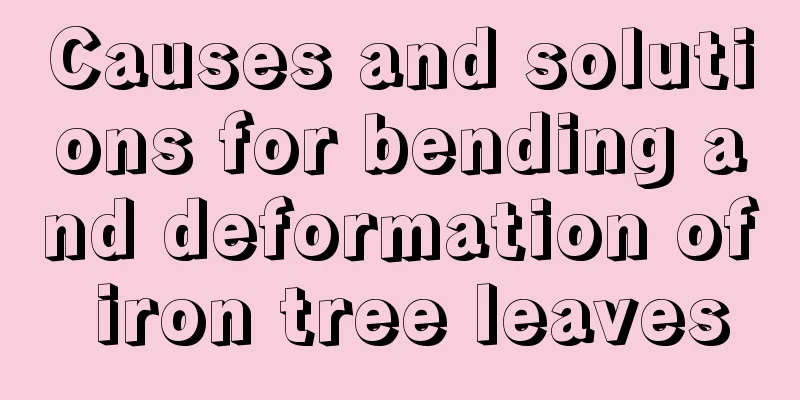Don’t forget to bring flowers home on typhoon days! These 3 kinds of flowers are very "delicate". If they are damaged by the wind, they cannot be saved.

|
Speaking of typhoons, let alone a typhoon of level 10, even if it is a typhoon of level 7 or 8, you should be careful to move the plants back indoors. Do not leave the plants outdoors, otherwise the plants may be blown away or damaged by the wind. If only the branches are left, they may lose their lives! So everyone must take timely protection. Today Huahua will give you some examples of plants that are delicate and cannot be blown by the wind. I hope that friends who grow these plants must pay attention when encountering bad weather. They must not only take good care of themselves, but also take good care of the flowers. Pearl Chlorophytum As the name suggests, the pearl spider plant is a fragile plant. Its leaves are very small and its flowers are also very delicate. Perhaps it is because the plant itself is relatively small that it looks more cute and attractive. For this kind of small flower, you must pay attention to the placement of it. It’s okay to put it outside when the weather is fine, but if the weather is bad, such as when it’s windy and rainy, the little pearl spider plant will die! Gardenia The most important thing about growing gardenias is actually watering them. Gardenias like a humid environment. Although gardenias like moisture, they should be moved back indoors on rainy days. Why? Because gardenia itself is actually very fragile, coupled with strong winds and heavy rains, it is very likely that the gardenia will wave goodbye! So everyone must take timely protection. Rose Friends who grow roses know that roses are actually very easy to grow, and you can often see roses on the roadside. Although roses are very easy to grow, everyone should also know that if the roses encounter strong winds or rain, they are not suitable to be grown outdoors! If you are planting roses in pots, it is best to keep the plants indoors. In fact, not only the plants mentioned above, but many plants cannot be grown in strong winds and heavy rains. It is best to take them home and grow them indoors. Not to mention weather like Typhoon Mangkhut in the south, where buildings were shaken, let alone small plants? In short, I still hope that everyone will not place plants in harsh environments on a daily basis. If you encounter a harsh environment, move the plants back indoors in time. We all choose to keep them at home, so why let the small plants suffer from the cold outside! Finally, I hope everyone can take good care of their plants! |
Recommend
How to grow white chrysanthemum
1. Breeding conditions 1. Soil: White crystal chr...
Don’t underestimate these 8 small flowers, they are very beautiful
Baby's breath Everyone should be familiar wit...
Nutritional value of grapes
Nutritional value of grapes Lai grapes contain a ...
What soil to use for Venus flytrap seeds and when to plant them
1. What soil to use The soil for planting Venus f...
How many days does it usually take for Nepeta to germinate?
Nepeta is a vegetable crop, mainly produced in Hu...
Planting and management of the lotus lantern
The Medinia paniculata, also known as the Medinia...
Does Green Leaf Palace Pink Bougainvillea bloom frequently?
Green Leaf Palace Pink is a very common variety o...
This "vegetable" is more expensive than pork. Planting one pot at home doesn't cost a dime.
Growing vegetables is indeed a cost-effective thi...
Can trumpet creeper be potted?
Can trumpet creeper be potted? Trumpet creeper ca...
How much profit can one acre of lotus root make (lotus root planting cost and benefit analysis)
Lotus root has a crisp, slightly sweet and refres...
I never expected that there is a Lilliput country hidden in the fruits and vegetables I eat every day!
▼Cabbage hot air balloon, so cute~ ▼Kiwi fruit ha...
Teachers and students of Tongliao University modified abandoned vehicles to remove snow. The snowplow is particularly eye-catching
Recently, Beijing, Inner Mongolia, Liaoning and o...
Disease control of Jade Plant
anthrax Harm and symptoms: This disease mainly ha...
Management of the flowering period of large-flowered cymbidium (how long is the flowering period, can fertilizer be applied during flowering)
1. How long is the flowering period of cymbidium?...
How to prune small roses
Rose pruning time There is generally no specific ...









